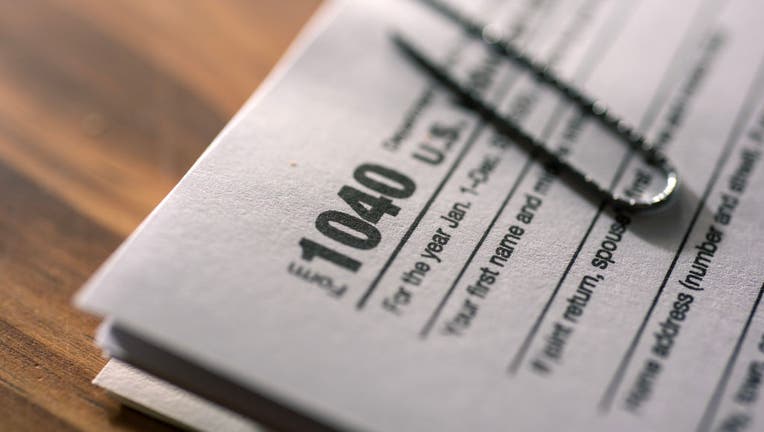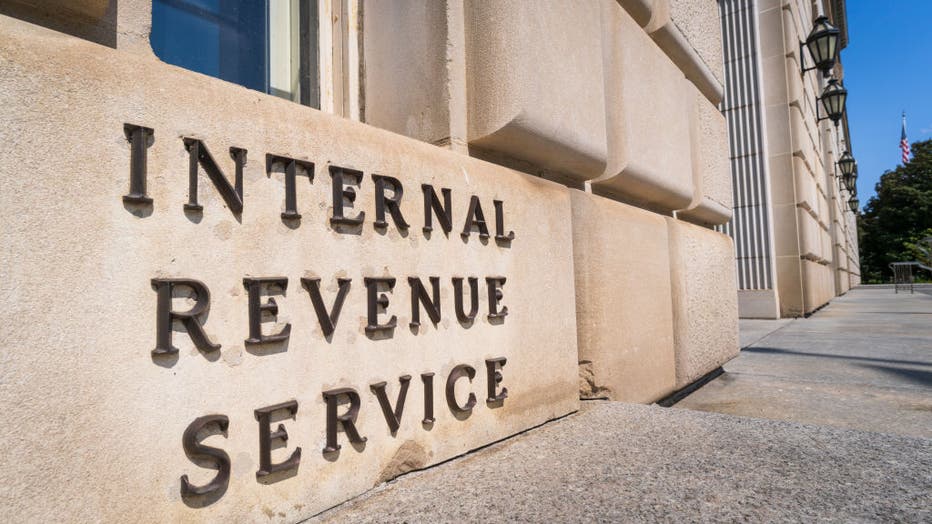'Where's my refund?' How to track, when to expect your money

NORTH HALEDON, NJ - APRIL 15: In this photo illustration, a 1040 U.S. Individual Income Tax Return document is seen on a desk on April 15, 2024 in North Haledon, New Jersey. (Photo illustration by Michael Bocchieri/Getty Images)
Tax season is here, and one of the most common questions Americans are asking is: "Where's my refund?"
Whether you’re eagerly awaiting that deposit or wondering if something went wrong, here’s everything you need to know about tracking your tax refund, what might delay it, and when you can expect your money.
How to check the status of your tax refund
What we know:
The IRS makes it easy to track your refund through its "Where’s My Refund?" website, and via the IRS2Go mobile app. Here’s how to check your refund status in just three steps:
Step 1: Gather Your Information
Before checking your status, you’ll need:
- Your Social Security Number (SSN) or Individual Taxpayer Identification Number (ITIN)
- Your filing status (single, married filing jointly, etc.)
- The exact dollar amount of your expected refund from your 2024 tax return

WASHINGTON, DC - SEPTEMBER 15: A sign marks the entrance to the U.S. Internal Revenue Service (IRS) headquarters building on September 15, 2024, in Washington, DC. (Photo by J. David Ake/Getty Images)
Step 2: Use the IRS Tracking Tools
Visit IRS.gov/refunds or open the IRS2Go app. If you e-filed your return, you can check your status within 24 hours. If you mailed a paper return, you’ll need to wait at least four weeks before tracking.
Step 3: Understand Your Refund Status
Once you enter your information, you’ll see one of three statuses:
- Return Received – The IRS has your return and is processing it.
- Refund Approved – Your return has been processed, and your refund is on the way.
- Refund Sent – The IRS has issued your refund, but it may take up to five days to show up in your bank account.
Where's my refund?
What's next:
If you e-file and choose direct deposit, you’ll likely receive your refund within 21 days. Paper filers will wait much longer—expect delays of six weeks or more.
- Fastest refunds go to taxpayers who e-file and select direct deposit.
- Slowest refunds happen when taxpayers mail paper returns or request a paper check.
Example Timeline:
If you e-filed your return on January 27, you could see your refund as early as February 17—assuming no delays.
EITC & ACTC Refund Delays
If you claimed the Earned Income Tax Credit (EITC) or Additional Child Tax Credit (ACTC), the IRS cannot issue your refund before mid-February due to fraud prevention laws. The agency estimates these refunds should hit accounts by March 3.

The Intuit Inc. TurboTax application is demonstrated on an Apple Inc. iPhone 6s in this arranged photograph taken in New York, U.S., on Feb. 15, 2016. The IRS began accepting 2015 individual income tax returns today and taxpayers have until Monday, A
What Can Delay Your Tax Refund?
While most refunds arrive smoothly, certain factors can cause delays:
- Errors or Incomplete Information – A missing SSN, incorrect filing status, or math mistakes can flag your return for review.
- Paper Returns – These take significantly longer to process compared to e-filed returns.
- EITC or ACTC Claims – By law, the IRS must hold refunds with these credits until at least mid-February.
- Identity Theft or Fraud – If your return is flagged for potential fraud, expect a delay while the IRS verifies your identity.
- Pro Tip: Double-check your return for errors before submitting to avoid unnecessary processing delays.
How to Speed Up Your Tax Refund
While there’s no magic way to expedite your refund, you can avoid delays by:
- Filing electronically – Paper returns take weeks longer to process.
- Choosing direct deposit – The fastest and safest refund method.
- Checking for errors – Small mistakes can cause major delays.
When to Call the IRS:
If it’s been more than 21 days since you e-filed (or six weeks for mailed returns) and you still haven’t received your refund, call the IRS at 1-800-829-1954.
Tax refunds in 2025: Lower taxes, bigger refunds?
By the numbers:
This year, many taxpayers could see larger refunds due to tax inflation adjustments, increased standard deductions, and expanded eligibility for the IRS Direct File program.
IRS Direct File Expands to 25 States
For 2025, the IRS is expanding its free Direct File program to 25 states, helping eligible taxpayers file their returns faster and potentially save on tax prep fees.
New States Added for 2025: Alaska, Connecticut, Idaho, Illinois, Kansas, Maine, Maryland, New Jersey, New Mexico, North Carolina, Oregon, Pennsylvania, Wisconsin.
Existing States: Arizona, California, Florida, Massachusetts, Nevada, New Hampshire, New York, South Dakota, Tennessee, Texas, Washington, Wyoming.
Will You Get a Stimulus Check?
The IRS is also sending out $1,400 stimulus payments to eligible taxpayers who didn’t receive their 2021 COVID relief checks. If you think you’re owed money, file a Recovery Rebate Credit by April 15, 2025.
Bottom Line
Tax refunds are usually processed within 21 days for e-filers but can take six weeks or longer for paper returns. The best way to track your refund is through the Where’s My Refund? tool or the IRS2Go app. If you’re experiencing delays, check for errors, ensure you filed electronically, and be patient—refunds may take longer if you claimed certain credits.
For the latest updates, visit IRS.gov/refunds.
The Source: This article was written using information from IRS.gov

